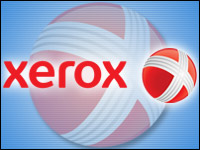
Some Xerox copiers/scanners have produced altered copies, researcher David Kriesel reported last week.
A Xerox Work Center 7535 actually changed the numbers on scanned documents.

After looking into the discrepancies, Kriesel posted his findings on his blog: The photocopier was resizing the room dimensions in floor plans, as well as changing prices quoted for the work.
Others have since been able to duplicate the problem, which Kriesel found to be an issue not with the copier itself but rather with its compression technology.
“Xerox devices shipped from the factory are set with the right compression level and resolution settings to produce scanned files appropriate for viewing or printing, while maintaining a reasonable file size,” Xerox spokesperson Bill Mckee told TechNewsWorld.
“Customers will not see a character-substitution issue when scanning with the factory default settings. We provide safeguards to avoid problems such as these,” he said.
“This is really an anomaly experienced by a few users when using the scan-to-file function — but only if they have modified the file compression settings,” added McKee. “This does not impact standard printing, copying and traditional fax functions. In fact, the vast majority of our customers will not experience any issues.”
Work Around It
The issue seems to be related to the fact that this isn’t just a traditional photocopier but rather is a multifunction machine that can copy, email, fax, print and scan.
These devices are typically used to replicate an image and generate a PDF, TIFF or other digital representation of a document. This often requires the resizing of image data, which involves the utilization of compression technology, and this may have been the culprit that caused the changed numbers.
Specifically it is the JBIG2 format that may be at fault, Kriesel wrote in his blog. This compression technology is designed for black-and-white, or bitonal, images — and in this format, it could mix up the symbols it scans.
It could swap characters that look similar — hence, a “6” in an original might be turned into an “8” in the copies. Although some news reports have suggested the numbers were altered randomly, a more-accurate observation is that the numbers were being replaced by similar-looking numbers.
“A few hours after my blog post describing a workaround, Xerox described the very same workaround in their blog and confirmed the issue is caused by JBIG2,” Kriesel told TechNewsWorld.
Xerox recommended that users reset scanning defaults and apply a software patch.
“Xerox is providing a guide demonstrating how to check the current device scan settings and how to return them to factory default,” said McKee. “Xerox is developing a software patch that can be remotely downloaded to each device. The software patch will disable the highest compression mode, thus completely eliminating the possibility for character substitution. Xerox will begin rolling out the patch within a few weeks.”
Compression Dangers
As this is related to compression technology, this problem could actually occur in devices besides the Xerox Work Center line. This could certainly be a cause for concern to anyone viewing a scanned and, more importantly, compressed document.
“JBIG2 is a powerful compression standard, but it is pretty dangerous when misused, as we see,” added Kriesel. “The main danger is that users are unable to see that’s something wrong, for the outcoming documents look perfectly fine.”
While someone might recognize badly scanned numbers and check them for accuracy, the problem is that in this particular case, the numbers were replaced by incorrect but correct-looking numbers, Kriesel noted.
“This makes the error almost impossible to detect,” he warned. “The issue has [likely] existed for years in Xerox machines and now that people are aware, they finally are replicating it across the planet. This might easily happen to non-Xerox devices as well.”
Character Recognition
“The Xerox story appears to result from problems in the copier compression and optical character recognition software that results in erroneous substitutions,” noted Charles King, principal analyst at Pund-IT. “Weirdly enough, while changing the image quality setting to high seems to correct the problem, doing so results in documents being harder to read.”
At this point, it’s hard to know how widespread this issue could be, but Xerox customers would be wise to check their work, King told TechNewsWorld.
“That may actually be a bigger problem,” he added. “Manually reading and checking documents for accuracy is hugely laborious and time-consuming — and materially impacts the value Xerox customers derive from their copiers.”
New Opportunities
This debacle has certainly put Xerox in the limelight — for all the wrong reasons. So far, the company has been unable to fully address it, and that may come back to haunt Xerox, even if the problem isn’t actually in the copiers themselves.
“I agree with Xerox — it’s not in this sense a bug — even though their support was unable to tell me the workaround for almost two weeks,” said Kriesel. “Otherwise, I would not have written my blog post in the first place, but it’s a heck of a communication glitch that has exactly the same implications like the bug I was fearing.”
This could mean new opportunities not for Xerox but rather for its competitors — provided they aren’t affected by the same compression glitch.
“It’s difficult to think of a more disastrous outcome for what’s supposed to be a basic business productivity device,” said King. “A copier is supposed to copy, right? This may be an example of a technological Peter Principle, where the continual addition of enhanced features eventually results in degraded performance.”




















































